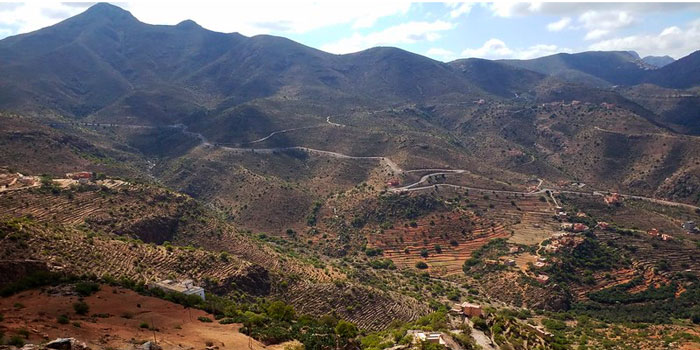Argan-based agro-sylvo-pastoral system within the area of Ait Souab - Ait Mansour
GIAHS since 2018

Global Significance
The GIAHS site “Agro-forest-pastoral System of the argan tree in the space Ait Souab-Ait Mansour” is a system that has proved its high resilience to a harsh environment under water scarcity, risk of erosion and poor soils through centuries. Together with the Argan trees, which is endemic from the region, and other local plants and livestock, this proposed system is a precious example of resilient traditional knowledge for the future.
Food and livelihood security
The livelihoods of local communities are tightly linked directly or indirectly to the local biodiversity. Indeed, farmers get the larger part of their income from the Argan trees cultivation. However, as an integrated system, it provides other food and material to respond to the community’s needs as staple crops, cereals, fire wood, meat and wool.
Agrobiodiversity
There are more than 50 cultivated plant species represented by 102 all endemic landraces of this region. The argan [Argania spinosa (l.) [Skeels] is the emblematic species and the keystone of the area tree. This Sapotaceae is the only presents in Morocco. Livestock production is ensured by the breeding of 16 races belonging to different species of cattle, sheep, goats, camels, horses, poultry and bees. This site offers additional resources associated with diversity. By its location in the refuge of the Mediterranean hotspot area.
Local and traditional knowledge systems
Both forestry, fruit and forage from the Argan trees are the pivot of a traditional agrarian system, which plays an irreplaceable role in the ecological balance of the region. The few arable land, meet behind the walls of the terraces of crops on the slopes of the mountain. Farmers have built these dry-stone terraces on the hills where annual and perennial crops are grown.
The nature of rugged terrain and the contrast of the arid climate make water a rare and precious commodity. To ensure the needs of the human diet, the inhabitants of this site invented a local technology in water conservation. It is underground tanks called in terms local ″Matifyia‟.
Cultures, value systems and social organizations
In addition to their excavation, construction and architecture, management and distribution in public and private places is a model of management of natural resources.The ancestral know-how related to the argan tree are many and are more particularly required and practiced by women. Additionally, irrigation water is managed by the Djemaa (Committee of wise men of the community) which has imposed for generations of the rules without force.
Landscapes and seascapes features
Thanks to the dry terraces and the resilience of this agricultural system, the landscape has been shaped and maintained until today. Additionally, from the architectural point of view, the so called Igoudar are collective granaries are designed to contain the precious assets of the community. They are built of stones and fit perfectly with the natural landscape; their architecture embodies the concepts of sustainability and adaptation. It is also an institution which provides functions for living together. The Igoudar constitute valuable knowledge in terms of Community solidarity and discipline practices.

